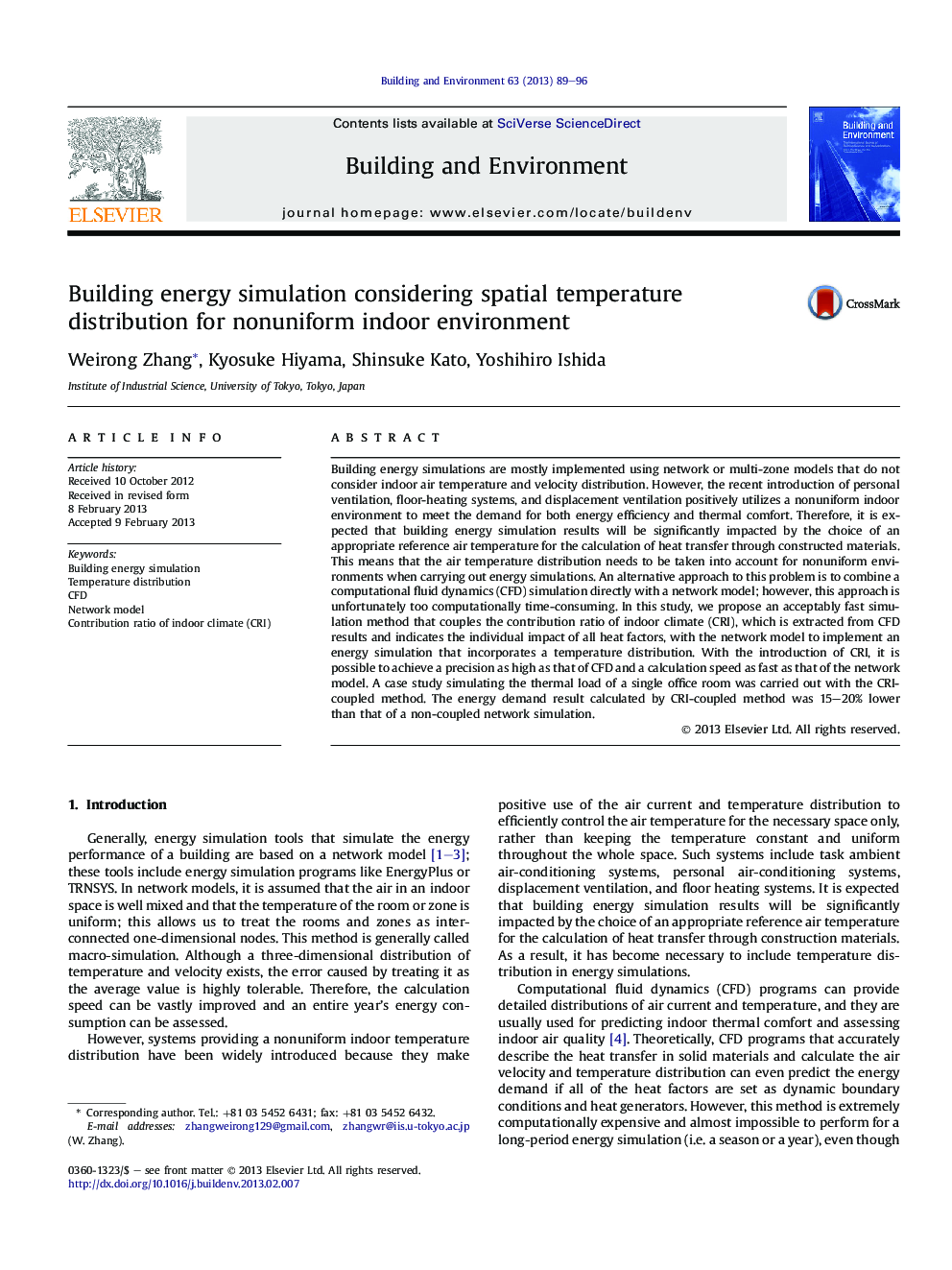| کد مقاله | کد نشریه | سال انتشار | مقاله انگلیسی | نسخه تمام متن |
|---|---|---|---|---|
| 248428 | 502565 | 2013 | 8 صفحه PDF | دانلود رایگان |

Building energy simulations are mostly implemented using network or multi-zone models that do not consider indoor air temperature and velocity distribution. However, the recent introduction of personal ventilation, floor-heating systems, and displacement ventilation positively utilizes a nonuniform indoor environment to meet the demand for both energy efficiency and thermal comfort. Therefore, it is expected that building energy simulation results will be significantly impacted by the choice of an appropriate reference air temperature for the calculation of heat transfer through constructed materials. This means that the air temperature distribution needs to be taken into account for nonuniform environments when carrying out energy simulations. An alternative approach to this problem is to combine a computational fluid dynamics (CFD) simulation directly with a network model; however, this approach is unfortunately too computationally time-consuming. In this study, we propose an acceptably fast simulation method that couples the contribution ratio of indoor climate (CRI), which is extracted from CFD results and indicates the individual impact of all heat factors, with the network model to implement an energy simulation that incorporates a temperature distribution. With the introduction of CRI, it is possible to achieve a precision as high as that of CFD and a calculation speed as fast as that of the network model. A case study simulating the thermal load of a single office room was carried out with the CRI-coupled method. The energy demand result calculated by CRI-coupled method was 15–20% lower than that of a non-coupled network simulation.
► We develop a method to integrate spatial distributions into energy simulation (BES).
► We utilize the contribution ratio of indoor climate (CRI) extracted from CFD results.
► By the proposed method, the BES can be achieved at a much-reduced calculation load.
► A lower difference was obtained when comparing to a non-coupled network simulation.
Journal: Building and Environment - Volume 63, May 2013, Pages 89–96